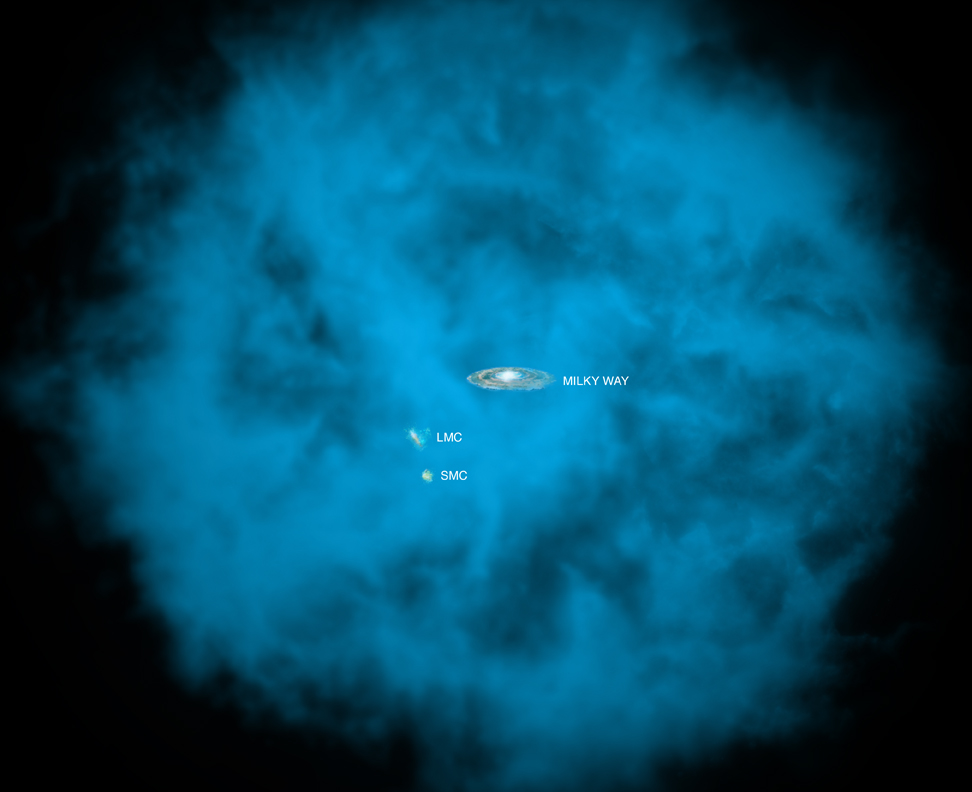
 Credit: Illustration: NASA/CXC/M.Weiss; NASA/CXC/Ohio State/A Gupta et al
Credit: Illustration: NASA/CXC/M.Weiss; NASA/CXC/Ohio State/A Gupta et al
The WHIM of the Milky Way
Baryons are subatomic particles made of quarks. The protons and neutrons which make up the nuclei of the familiar atoms that constitute the periodic table are good examples of baryons. Without baryons, the material universe around us would not exist. While it sounds unlikely, astronomers have been able to determine rather precisely the amount of matter in the form of baryons in the ancient Universe, using a number of lines of evidence. Disturbingly, the amount of this so-called "baryonic matter" in our local Universal neighborhood seems to be well below the cosmological estimate. What happened to the baryons? Where did they go? Astronomers suspect that most of the missing baryone may be hidden in a form of hot matter permeating the space between galaxies. Such hot matter, which is known as the Warm Hot Intergalactic Medium, or WHIM, would be in general difficult to detect. A new study using data from the Chandra X-ray Observatory, the XMM-Newton X-ray Observatory, and the Suzaku X-ray Observatory has found evidence of an enormous, enormously hot cloud surrounding our Milky Way galaxy. The size scale of the hot cloud, relative to the size of the Milky Way, is shown above. The Chandra data showed evidence of absorption of light from distant galaxies and quasars by oxygen atoms at temperatures of millions of degrees in the Milky Way's halo. From estimates of the amount of oxygen relative to hydrogen, astronomers have estimated that the total mass in this million-degree halo is ten billion solar masses, comparable to the total mass of stars in the Milky Way's disk.
Published: October 1, 2012
<
HEA Dictionary ● Archive
● Search HEAPOW
● Other Languages
● HEAPOW on Facebook
● Download all Images
● Education ● HEAD
>

Each week the HEASARC
brings you new, exciting and beautiful images from X-ray and Gamma ray
astronomy. Check back each week and be sure to check out the HEAPOW archive!
Page Author: Dr. Michael F. Corcoran
Last modified Tuesday, 27-Feb-2024 10:06:48 EST


